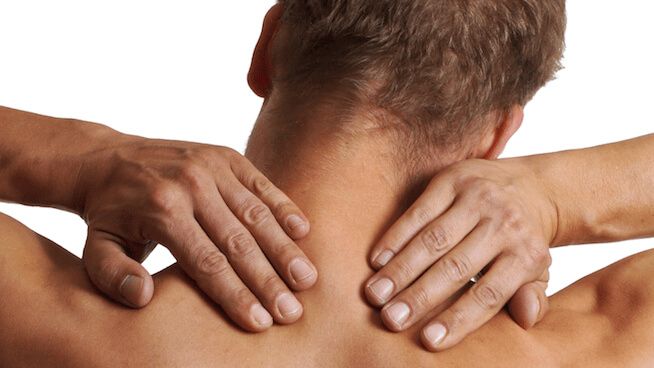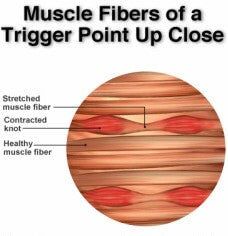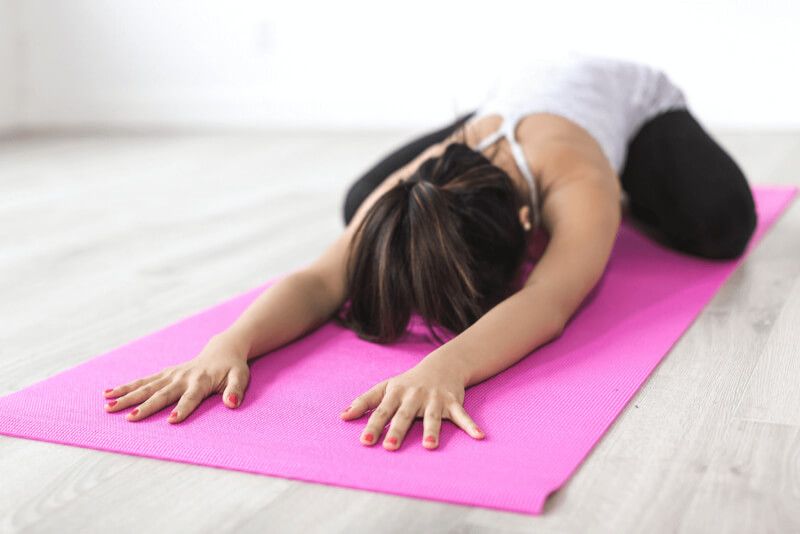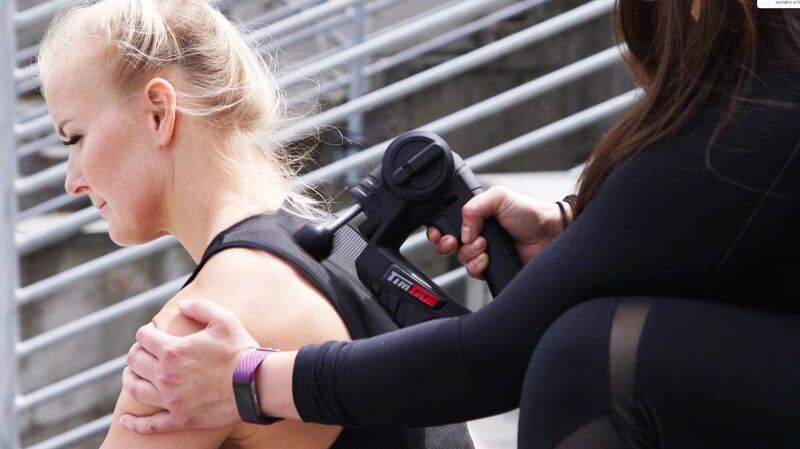Athletes, laborers, and white-collar workers alike all know the feeling: that sharp, stabbing pain in your back and shoulders that feel like it will never end. We’re all familiar with what we call knots, or trigger points, and have our theories about where they come from. Although, the truth is that scientists and doctors haven’t come up with a definitive answer about the physiological process that leads to the formation of knots. What we do know, however, is that the pain from knots is no joke, which is why the recovery experts at TimTam are here to break down knots (literally and figuratively) with our expert line of trigger point release tools. Here, we’ll cover the following:
- What is a knot?
- Can you prevent knots?
- How you can treat knots with trigger point massage tools.
What is a Knot?
A Breakdown of Common Theories and Existing Knowledge

If you’re an athlete, you’re used to knots popping up after a series of repetitive movements: a tough practice, long run, or otherwise. However, even if you’re a worker who spends most of your day at a desk, the risk of developing these sharp, stabbing pains in your muscles are not much lower-- so what gives?
Knots are scientifically known as myofascial trigger points, occurring and existing at the level of the muscle (myo-) and the fascia. Outside of this knowledge, however, there is very little consensus on the physical manifestation of these trigger points or their causation.
What we know is that these injuries can come from overuse and repetitive motion in addition to sedentary lifestyles -- but the physiological processes that occur in these related muscle groups are inherently different, nonetheless, resulting in a seemingly identical condition.

Image Source: https://www.cindyprocterrmt.com/trigger-points-knots.html
One theory states that knots can be a result of micro-tears that occur in muscles from movement and exercise. Micro-tears occur naturally in the muscle as a result of working out and day-to-day use. The reparation of these minor strains are the reason our muscles are able to grow and become stronger. Some conclude that trigger points can be the result of complication while the muscles are healing. However, this theory does not supply an explanation for those living a sedentary lifestyle suffering with myofascial trigger points.
Another theory suggests that knots are a result of neuromuscular inhibition. When a muscle is injured or a stress response is indicated in the brain, the brain will send signals to limit movement in the muscle as a form of protection, known as guarding. As a result, trigger points can appear in the strands (fascicles) of contracted muscle caused by a micro-spasm that results in a ‘bunching’ or ‘twisting’ of these fascicles.. These spasms then have the ability to choke off their own blood supply, causing pain and irritation. This would be a reasonable explanation for those who work at a desk all day and experience knots.
Regardless of where knots come from, they can relate to a more severe issue: myofascial pain syndrome. Myofascial pain syndrome (MPS) is an ongoing condition where someone experiences chronic pain due to a muscle being contracted repetitively. This is common in athletes, in addition to, people under a lot of stress (who may have a tendency to tense their muscles in irregular patterns). Whether MPS is your issue or not, trigger points can cause a great amount of pain and discomfort that can affect day to day life and the ability to sleep -- meaning it’s time to figure out what you can do.
Can I Prevent Knots?
Approaching Your Knots Head-On with Preventative Care

Asking how you prevent knots does not come with a clear-cut answer because there is no clear answer as to why they form in the first place. Depending on the explanation for where knots come from that you choose to abide by and your own lifestyle, this answer can look vastly different.
If you’re an athlete, a good way to prevent knots is to focus on recovery. Maintaining proper care for your muscles can mean many different things - like improving posture, eating healthy, trying massage and massage tools, or taking time to stretch after a tough workout. All of these techniques play a part in aiding muscle recovery. Stretching and massage can relieve tension and increase blood flow to the damaged area. This blood flow helps to increase the removal of built up metabolic byproducts as a result of muscle activity, metabolism, and acute damage. Additionally, proper nutrition will help fuel the muscles with necessary nutrients to repair, replenish and recover until fully healthy.
If you’re a white-collar worker or live a sedentary lifestyle and experience knots, doctors recommend moving around more throughout your day. Taking 15 minutes to go for a walk or stretch can prevent your muscles from tensing up throughout the day, allowing you to stay calm and relaxed physically and mentally. If you think the stress from work could be a source of your pain as well, we recommend trying out stress-relief techniques.
If your pain persists and intensifies, you should contact a doctor for ways to diagnose and tackle your chronic pain. Your doctor will likely recommend low-grade pain relief, deep tissue massage, and a variety of other treatments to keep you feeling your best.
Can I Treat Knots with Trigger Point Massage Tools?
Ways to Treat Myofascial Trigger Points

While knots are painful and generally misunderstood, the good news is that we do know how to treat them. Depending on the location and severity of your knot, you have options to help tackle your pain -- and it all starts with modern recovery tools.
One of the best ways to reduce knots is through deep tissue massage. With trigger point massage tools, like the TimTam Power Massager, you can essentially ‘break up’ the tension and binding in the muscle and fascia using powerful percussive motion. The Power massager revolutionizes the way people massage knots due to the incredible power of self-application. With the ability to reach deep into muscles, the Power Massager can help relieve acute trigger point pain quickly, efficiently, and at a fraction of the price of on-going treatment with a massage therapist.
If you’re a runner, a great way to care for trigger points is by rolling muscles after a long run. Releasing tension is key to relieving this pain and allowing microtears in your muscles to heal. TimTam has a variety of great products for rolling, including:
- Vibrating Foam Roller: foam roller with onboard vibrations for greater pain relief than ever before.
- Polish Light: tiny vibrating massage ball with onboard heat designed to reach focused trigger points.
- Hand Roller Massager: manual roller tool with plastic rollers to relieve aching pain in larger muscle groups.
Another great way to combat pain is with transcutaneous electrical nerve stimulation (TENS). TENS is designed on the two theories that overstimulation of nerve cells, or the release of endorphins (natural pain killing chemical) as a result of overstimulation, reduces or blocks pain signals to the brain, thus reducing the feeling of pain in the area. Sending small electric currents to your muscles wirelessly, the TimTam Pulse Massager is the Bluetooth-enabled TENS device designed to stimulate muscles and relieve pain conveniently on the go.
While there are multiple theories on why knots form and what they are, what we do know for sure is that it is possible to tackle this pain head-on with trigger point massage tools from TimTam. Explore our collection of modern recovery tools now and start pushing your pain to the side.


